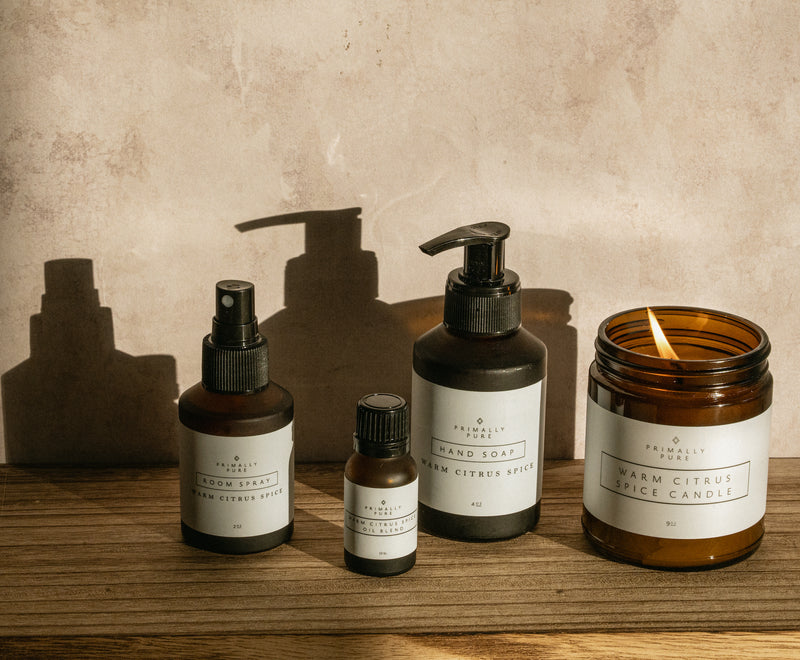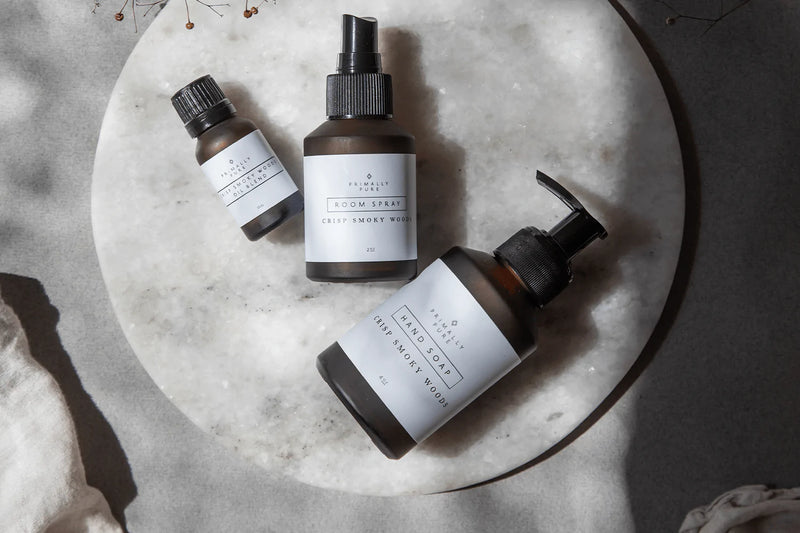An Honest Conversation About Face Fillers: What You Need to Know
From anti-aging to contouring and plumping – face fillers, also known as dermal fillers, are used in almost every corner of the skincare industry. They’ve been on the market since the early 2000s but didn’t take off till around 2010. Fast forward a decade, celebrities and your average woman are all on board.
Plus, all the face fillers before and after pictures have probably got you wondering… is it for me?
While the immediate results may seem quite tempting, there’s more to uncover about face fillers. With the use of face fillers on the rise, we frequently get questions on this topic.
→ Are they safe?
→ Are they toxic?
→ Are they effective?
In addition to our own research on the topic, we decided the best way to bring our community answers would be a raw, transparent conversation with a medical professional.
We were lucky to snag an interview with the very generous and kind Dr. Chesnut. He’s a double board-certified surgeon, MD, and FAAD, who’s been around for the rise (and some would say current downfall) of facial fillers.
Dr. Chesnut, though very humble, is pioneering better education around the proper use and application of facial fillers. His life’s work includes perfecting a natural alternative to facial fillers with long-term results far more bio-compatible than traditional dermal fillers (more on this later!).
We were thrilled to connect with someone so knowledgeable, down-to-earth, and realistic in his approach to all things skin health. If you’re curious to see what he has to say, plus some of our own research, consider reading along for a balanced, informative approach on facial fillers.
Intro to Face Fillers/Dermal Fillers
When a new trend is on the rise, it’s (understandably) easy to get swept up in the hype and forget to do your research. That’s why we’d like to start at the beginning.So What Is Face Filler?
Dermal fillers are synthetic or naturally-occurring substances injected into the body's soft tissue at different depths to lift, plump, and contour the face – or hands, earlobes, and other body parts.1
There are different types of face filler formulas, but the most common is hyaluronic acid.
Other types of fillers include:1
- Calcium hydroxylapatite (Radiesse)
- Porcine/bovine-based collagen (Evolence, Zyderm, Fibrel)
- Human-based collagen (Cosmoderm, Cosmoplast)
- Poly-L-lactic acid (Sculptra)
- Polymethylmethacrylate (Artefill)
- Polyacrylamide (Aquamid)
- Fat transfer
It’s best to look into each formula to fully understand what would go into your body – especially if you’re allergic to certain substances. But let’s get into the specifics of how they work.
How Do Face Fillers Work?
Many assume face fillers and Botox are very similar, but they’re not. Botox uses a toxin to paralyze the muscles, while dermal fillers “fill” sunken or saggy areas of the skin.
It depends on the type, but generally, dermal fillers are injected into your tissue to create additional volume or alter the shape of a specific body part. Face fillers have gained traction for their ability to minimize signs of aging from volume loss or wrinkles.
Why Are Face Fillers So Popular?
The main reason: our culture is obsessed with slowing down the appearance of aging.
That’s just a fact.
But in our interview with Dr. Chesnut, he did a great job explaining a little more:
Simply put, fillers have been widely commoditized, meaning they’re easy for the general public to access. And because it’s become so widely available, the cost for face fillers is also more accessible.
Plus, the FDA’s requirements are pretty loose, meaning it’s easy for companies to approve + market the effectiveness of their fillers. (Sounds similar to the FDA’s loophole with fragrance…)
In fact, as Dr. Chesnut revealed, FDA approval is often based on results in a portion of the face that’s not even necessarily a common aging place. Weird, huh…? Still, fillers continue to grow in popularity. So, let’s look into the benefits of face fillers.
Benefits of Face Fillers
Here are some of the most favored face filler benefits we’ve found.
An Easy Fix for Unwanted Skin Issues
One of the claims of getting face fillers is that it takes less time (and effort) than a complex and expensive skincare routine.
The most common “fixes” you’ll see:
- Face fillers for wrinkles or volume loss – smoothing sunken portions of the skin helps with volume loss to create a more youthful appearance.
- Face fillers for acne scarring – like microneedling, fillers are appealing for acne-prone patients because of the more immediate results than other skincare options.
Some people (including many aestheticians + dermatologists) promote face fillers as a quick, simple fix for their skin issues.
Enhance Features to Your Liking
Fillers are often used to add volume or shape to your:
- Lips
- Chin
- Jawline
- Cheekbone
Adding fillers can achieve a more defined or contoured look.
Relatively Painless
Because of the very fine needles and the use of a local anesthetic during the procedure, it’s generally not considered a painful or difficult procedure.
Short Recovery Period
Because it’s not an involved procedure, you’re usually cleared to resume normal activities immediately – as long the procedure goes smoothly. (Though avoiding intense physical activity for a day or two is still recommended to minimize swelling/bruising.)
Long-Lasting Results
Are facial fillers permanent? Yes and no.
It should be noted that longevity is debated and can depend on the type of filler. Many online resources will say 6-12 months is the average time.
However, in our conversation with Dr. Chesnut, who’s well-versed in face fillers, he said he’s seen filler from more than a decade ago – quite often. We also found a study from Dr. Gavin Chan, who used MRI to prove fillers were still present in the face up to 6-8yrs later!4
So, does filler stay in your face forever? Truthfully, we don’t know because it hasn’t been around long enough. If it does, it’s probably not a good thing – but more on that later.
Now that we’ve covered the benefits, let’s get into the risks of face fillers.
Dangers of Face Fillers: Face Fillers Gone Wrong
Of course, if you’re considering face fillers or have face fillers, you may not want to read a “face fillers gone wrong” section.
But we care for our community and always want you to have the full picture when it comes to dangers, side effects, and possible issues – especially for your skin health.
So it’s essential to consider: are face fillers dangerous?
Understanding the risks equips you to make confident + educated decisions.
Face Fillers Being Over-Used/Misused
Because face fillers are easy to access, many companies/professionals administer them – even those who may not be adequately trained or educated.
And ironically, over time, too much face filler creates the opposite effect – you look old, swollen, and less defined. For a deeper dive into this concept, check out this video.
The Balloon Comparison
We love how Dr. Chesnut broke this down when we asked about the misuse of fillers:
“If you deflate a balloon, the surface gets wrinkly, so you’ll think you need to re-inflate the balloon… but then over time, with filler building up, everyone starts to get over-volumized.”
In short, he believes there are more appropriate + long-term ways to address wrinkles.
Local Reaction
Most professionals administering dermal fillers would say the face filler’s side effects are minimal: redness, swelling or bruising.2
However, The American Society of Plastic Surgeons lists the following “conditions” you may experience after a dermal filler procedure:3
- An "overfilled" appearance to treated areas
- Swelling or bruising ranging from mild to severe
- Temporary numbness or redness
- Palpable lumps or hard areas at the injection sites
- Hypersensitivity reaction that can seem like an allergic reaction with hives and swelling
They also mention most of these are easily alleviated, but some may require “more aggressive treatment with medications or injections.”
Rare but Severe Vision Loss
Unfortunately, severe reactions aren’t entirely unheard of with dermal fillers. If the filler is accidentally injected into the retina or a major vein/artery instead of the tissue around the eye, it can result in blindness.5
Called iatrogenic blindness, this is a devastating and irreversible mistake.5
Other Possible Face Fillers Side Effects
A study in the Journal of Cutaneous and Aesthetic Surgery listed these face filler side effects as potential risks:2
- Delayed allergic reactions
- Chronic inflammation + infection
- Granulomas (lumps of immune cells clustered under the skin)
- Loss of muscular function
- Spider veins
- Thick, raised scars
And because we’re advocates for lessening your body’s toxic load, we also believe the presence of preservatives in dermal fillers could pose potential toxicity risks too.
Unexplained Immune Reactions
When we asked about potential side effects, Dr. Chesnut described a very peculiar phenomenon. Over the years (especially when he was actively using traditional dermal fillers as his go-to), some of his patients had unexplained immune responses to fillers.
With Primally Pure’s focus on eliminating foreign/toxic substances from our bodies, we found this intriguing.
His patients’ (who had minor or no reactions) fillers would “light up” randomly – some even years later!
He explains there’s always the potential for your body to recognize this “foreign” hyaluronic acid later on and create an immune defense response. The fillers can become uncomfortable – swollen, inflamed, and firm. He’s seen it happen after seemingly harmless and unrelated circumstances, like dental cleaning or exposure to strep pathogens.
Of course, it would be difficult to prove a direct correlation, but he couldn’t deny this delayed immune phenomenon could be linked to dermal fillers.
Migration to Unintended Areas of the Face
Well-known but not often discussed is the point that plenty of studies (and real-life results) have shown how dermal fillers can migrate to other areas of the face, causing disfigurement and pain.
Dr. Gavin Chan explains how this happens through movement:
And as Dr. Chesnut put it, quite honestly, migration is unavoidable:
In fact, Dr. Chesnut told us he’s currently working on publishing a study examining the migration of lip fillers. When performing a lip flip procedure, 49 out of the 50 patients had lip filler that had migrated all the way from the lip to under the base of the nose.
P.S. Check out this post on Dr. Chesnut’s Instagram to see a real-life example of filler migration.
Removing Face Fillers
Does face filler dissolve?
Removing/dissolving fillers is generally advertised as an option, but there can be complications, especially if you’ve accumulated years' worth of filler.
When we asked Dr. Chesnut about removing fillers, he was pretty hesitant. He said:
“Can you totally reverse it? Well, not really. I’d argue it’s incredibly involved. I’m trying to educate the masses that it doesn’t dissolve as readily as you think. You can dissolve some of it. But to get rid of every bit of hyaluronic acid is borderline impossible to do.”
There’s an enzyme that’s often used to dissolve the hyaluronic acid filler, but as you do more “dissolver sessions”, the enzyme may start to also dissolve your skin’s natural hyaluronic acid. Then you’re left with even more volume loss than you started with.
“You get long-term changes in native tissue. It changes the way the skin looks, and it can be really disturbing for people who go through aggressive courses of trying to dissolve it.”
– Dr. Chesnut
He wants professionals (and the public) to understand what to do with fillers that need to be corrected or dissolved. Dr. Chesnut says patients are now coming to him trying to get their native tissue back, and he believes this needs to be a mainstream part of the discussion around fillers from the beginning.
Perception Drift
Unfortunately, all too common with cosmetic procedures, patients unknowingly experience perception drift. As Dr. Chesnut puts it, people lose sight of where they’re at in their filler journey.
Dr. Carin Litani’s post does a great job explaining how this gradual shift happens:6
“Your brain adjusts to your improved face after a cosmetic procedure, and the new face becomes baseline. Your brain looks for more flaws to correct, adjusts to the new baseline, and the cycle continues until your new face is no longer yours!”
When it comes to cosmetic changes to the face, Dr. Chesnut has a very conservative approach. He challenges patients (and the wider public) to consider face filler before and after photos. He says, “Okay, it’s different, but is it better? Different ISN’T always better. Do you have context for what their whole face looks like?”
While many of us know this, he still reminds patients that lighting, positioning, and manipulating photos can make a huge difference in perceived results.
Our Take on Face Fillers
With what we’ve learned, we prefer to pass on traditional fillers – simply because of the potential risks associated with injecting foreign substances into the body.
If you’re going to opt for face fillers, consider a natural face filler like Dr. Chesnut’s fat stem cell approach. His unique process utilizes the traditional fat transfer method (used for Brazilian butt lifts and breast augmentations) by injecting your body’s own fat to replace lost volume. Instead of hyaluronic acid, Dr. Chesnut utilizes only the most stem-cell-rich fat molecules (sourced from your own body) for more natural results.
The benefit of using fat instead of hyaluronic acid? You’re replacing like for like.
This means it’s 100% bio-compatible with your body and presents fewer risks. And as Dr. Chesnut explained, because your face has so much blood flow, the fat easily takes. It’s a more effective long-term option than traditional face fillers – your body’s fat doesn’t have a shelf life. It can flatten your curve of volume loss and improve muscle + fat around the area.
→ Other benefits of natural face filler vs. synthetic:
- It’s a significantly better deal, just more money upfront.
- No cutting/sewing, but a straightforward + simple procedure.
- There’s no downtime/recovery, and you can resume your normal activities.
Opting for a fat stem cell approach is a much safer, more effective method if you decide to get face fillers. But if you’re on the fence, let’s explore some 100% natural solutions.
Alternatives to Fillers: Natural Solutions
We believe in the power of a non-toxic, clean skincare routine paired with holistic modalities to age gracefully + effortlessly. Here are our favorite ways to achieve similar anti-aging results:
Facial Massage
- Gua sha stones can bring nutrients to the skin’s surface daily by plumping and maintaining healthy tissue/volume.
- Buccal massage to release tension in the jaw and cheek muscles, improving circulation.
- Facial cupping is very effective in sculpting and plumping skin to improve blood flow.
- Cosmetic Acupuncture stimulates collagen production for tissue regeneration.
- Manual Lymphatic Drainage helps move lymphatic fluid to bring healing + create pathways for nutrients.
Healthy Lifestyle Choices
- Prioritize hydration to moisturize and plump your skin from the inside out.
- Focus on balanced nutrition and incorporating items like skin superfoods to support healthy, youthful skin.
- Avoid gluten, sugar, + alcohol to reduce swelling and inflammation that causes premature aging (aka sugar sag).
- Build healthy sleep habits for a deeper sleep so your skin’s self-healing powers take over.
- Sweat More to unlock detoxification, moisture retention, and a variety of surprising health benefits for the body + skin.6
- Practice autophagy to activate your body’s self-healing and anti-aging capabilities.
- Anti Aging Skincare (ahem, Primally Pure Plumping Collection) with nature-derived ingredients featuring:
Your Skin, Your Choice
When it comes to your skin, it’s up to you. We want to be your trusted resource for all your questions related to skin health + toxin-free living. Researching and having these conversations around face fillers has been enlightening, and we’re thankful for the opportunity to share a bit of what we’ve learned with you.
- Glam Derm | Dermal Fillers: The Ultimate Guide
- National Library of Medicine | Managing Complications of Fillers: Rare and Not-So-Rare
- American Society of Plastic Surgeons | Dermal Fillers
- Victorian Cosmetic Institute | How Long Do Dermal Fillers Really Last? MRI Scans Provide Evidence
- Journal of Dermatology and Skin Science | Vision Loss and Blindness Following Fillers
- National Library of Medicine | Functions of the Skin Microbiota in Health and Disease
Pin your fav blog post below:












Leave a Comment